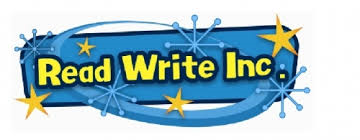Writing
Spellings
Spellings are tricky and are often remembered for a spelling test rather than keeping these in the children’s long term memory. We want to help children to learn spellings and embed them into their long term memory through retrieval practice. Retrieval practice is a technique where children recall what they have learnt. In simple terms, whilst we focus a lot of our time helping children get knowledge into their heads, retrieval practice is all about getting that knowledge back out there - strengthening retention and encouraging young learners to actively engage with, examine, and use what they have learnt.
Common Exception Words
Common exception words are words that do not follow the common phonetic spelling rules that pupils learn. Many of these exception words are used frequently, hence the use of 'common' in the name. Pupils are normally introduced to common exception words in their first year of primary school and throughout their time at Crick Primary School.
Learning to write, will open up so many different opportunities for each individual pupil. Being able to write gives each pupil a way to share their ideas, imagination and opinions with the world.
At Crick Primary School, we teach English writing lessons using Literacy Tree as a framework. Literacy Tree is a book based approach that immerses pupils in high quality, award winning texts by new and significant authors. We ensure the national curriculum is covered through an exploratory way using literature at the forefront.
The National Curriculum for each year group focuses on spoken language, transcription, composition, vocabulary, grammar and punctuation.
Spoken Language
The national curriculum for English reflects the importance of spoken language in pupils’ development across the whole curriculum – cognitively, socially and linguistically. Spoken language underpins the development of reading and writing. The quality and variety of language that pupils hear and speak are vital for developing their vocabulary and grammar and their understanding for reading and writing.
Transcription
Writing down ideas fluently depends on effective transcription: that is, on spelling quickly and accurately through knowing the relationship between sounds and letters (phonics) and understanding the word structure and spelling structure of words.
Composition
Effective composition involves forming, articulating and communicating ideas, and then organising them coherently for a reader. This requires clarity, awareness of the audience, purpose and context, and an increasingly wide knowledge of vocabulary and grammar. Writing also depends on fluent, legible and, eventually, speedy handwriting.
Please visit the EYFS page to find out more information about early writing at Crick Primary School.
Handwriting

At Crick, we follow the RWI Handwriting Scheme which links closely with how we teach Phonics.
RWI teaches a casual cursive style.
Children are taught step by step by:
1.Associating a sound with a picture mnemonic
2.How to sit comfortably and hold a pencil in a tripod grip
3.Form lower case letters in the correct direction
4.Form lower case letters of the correct size
5.Join letters using two basic joins- diagonal and horizontal
On the left are the phrases we use for letter formation:












